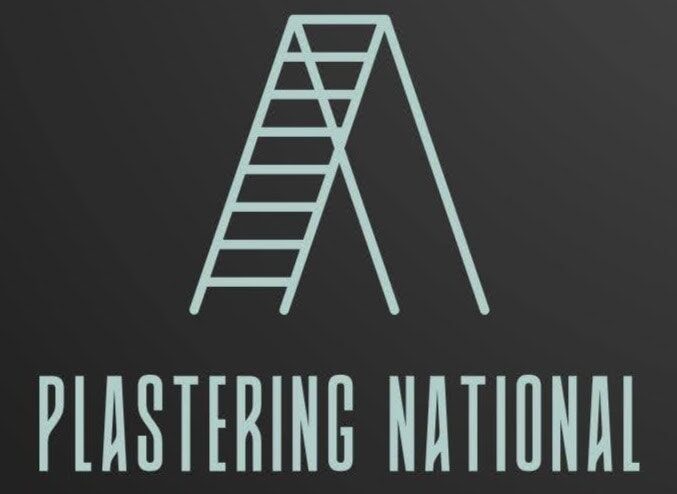Plastering is not just about functionality; it’s also a powerful design tool. The right plaster finish can transform an interior space, enhancing aesthetics while providing a smooth, durable surface. Today, decorative plastering offers a range of finishes that fit into various design schemes.
Whether aiming for a sleek modern look or a textured finish that adds character, decorative plastering is the perfect solution for enhancing contemporary interiors.
Let’s Get Straight to the Point
Decorative plastering is a versatile tool that enhances the aesthetics and durability of contemporary interiors. It offers a range of finishes, from smooth, sleek surfaces to textured designs, catering to various design styles.
Common plaster types like gypsum, lime, and cement each provide unique benefits, including smooth finishes, eco-friendly options, and durability. Textured plaster finishes add depth and character to modern spaces, while multiple-layer techniques ensure long-lasting results.
Eco-friendly and soundproof plaster options are gaining popularity. By selecting the right plaster and technique, homeowners can elevate their interiors with beauty and durability, transforming their living spaces.
The Essential Role of Plastering in Contemporary Interiors
In the world of interior design, plastering plays a significant role in both the functionality and aesthetics of a space. Decorative plaster isn’t just about creating smooth walls and ceilings; it adds texture, depth, and warmth to a room, making it feel more inviting.
Plaster finishes also have practical benefits. They create a protective layer for walls and ceilings, preventing damage from moisture and temperature fluctuations. For homeowners, plastering can increase the longevity of interior walls, making it an investment that protects both beauty and structure.
Today’s plaster finishes, ranging from smooth coatings to textured walls, have the potential to complement a variety of design styles. Whether decorating a minimalist, modern home or a traditional, eclectic space, plaster finishes can seamlessly integrate into your design.
Elevate your home with stunning plaster finishes. Contact us now to get started on creating a unique and stylish space!
Types of Plaster Used for Contemporary Interior Design

Plastering materials come in many forms, each with distinct characteristics and benefits. These materials allow for various finishes, textures, and visual effects. Below are the most commonly used plasters in contemporary interiors:
Gypsum Plaster
Gypsum plaster, often known as Plaster of Paris, is one of the most popular materials for modern interiors. It provides a smooth, uniform finish, making it ideal for minimalist and contemporary designs.
Gypsum plaster is known for its ease of application and quick drying time, which makes it a practical choice for quick renovations.
Benefits:
- Smooth and sleek finish
- Suitable for both walls and ceilings
- Fire-resistant properties
- Ideal for modern, minimalistic design
Lime Plaster
Lime plaster is a traditional material with a rich history. While it’s less common than gypsum plaster, it has been making a comeback in modern homes due to its aesthetic appeal and eco-friendly properties. Lime plaster offers a soft, breathable finish that works well in contemporary and rustic homes.
Benefits:
- Environmentally friendly
- Breathable, reducing moisture build-up
- Ideal for sustainable homes
- Creates a smooth yet slightly textured finish
Cement Plaster
Cement plaster is one of the most durable and long-lasting plaster materials available. It’s often used in interior and exterior applications, especially in high-moisture areas such as kitchens and bathrooms.
When combined with contemporary design elements, cement plaster can provide a sleek, industrial look for modern interiors.
Benefits:
- Highly durable and resistant to wear
- Offers a strong finish for high-traffic areas
- Available in various textures, from smooth to rough
- Can be used both indoors and outdoors
From smooth modern finishes to textured designs, we’ve got the perfect plastering solutions for your home. Contact us today!
Popular Plaster Finishes for Contemporary Interiors

While the type of plaster is essential, the finish you choose can significantly impact the final look of your room. Finishes range from smooth and polished to textured and rustic. Let’s explore some of the most popular plaster finishes for contemporary interiors:
Smooth Plaster Finish
A smooth plaster finish is the epitome of modern elegance. This finish is ideal for homeowners who want clean, crisp walls with no texture. Smooth plaster is commonly used in minimalist interiors and can make a room more open and airy.
Application Tips:
- Apply in thin layers for a perfectly smooth surface
- Use fine sand in the plaster mix for a glass-like finish
- Perfect for modern or industrial designs that require clean lines
Textured Plaster for Visual Impact
Textured plaster finishes offer more visual interest and can add depth to a room. Textures such as sand finishes, sponge finishes, or even geometric patterns can be applied to plaster to create a more dynamic surface. These finishes are ideal for spaces that need to balance modern elegance with a touch of warmth.
Application Tips:
- Use trowels and sponges to manipulate the surface
- Can be applied in layers for added texture
- Choose subtle textures for a sophisticated look or bold patterns for a statement finish
Stucco and Exposed Plaster
Stucco and exposed plaster finishes are becoming increasingly popular in contemporary interiors. These finishes offer a timeless, luxurious appearance, making them ideal for both traditional and modern homes. The exposed plaster look gives walls an earthy, natural feel, often seen in Mediterranean-inspired homes.
Application Tips:
- Use marble chips or pebbles to create an exposed look
- Apply in three layers for a strong, durable finish
- Works well with both modern and traditional designs
The Best Plastering Techniques for Interior Walls and Ceilings
The right plastering techniques ensure a flawless finish and lasting durability. Applying plaster in layers is important, allowing each layer to dry thoroughly before adding the next. This prevents cracks and ensures the plaster adheres well to the surface.
Multiple Layer Techniques
Multiple plaster layers are often necessary for a smooth, durable finish. Start with a base layer of rough plaster to create a solid foundation, then follow up with a finer finishing layer. The result is a surface that’s both smooth and long-lasting.
Application Tips:
- Start with a coarse undercoat for adhesion
- Apply fine finishing plaster for smoothness and shine
- Allow each layer to dry fully before adding the next
Eco-Friendly and Soundproof Plastering Options
In modern homes, eco-friendly and soundproof plastering materials are in high demand. Acoustic plaster helps to reduce noise in large, open spaces, while sustainable plasters made from natural materials align with green building practices.
Application Tips:
- Acoustic plaster can be used in offices or living rooms to reduce noise
- Sustainable plasters reduce the carbon footprint of the home
- Lime-based plasters are perfect for eco-conscious homeowners
Choosing the Right Decorative Plaster for Your Home
Selecting the right plaster finish and technique for your home is essential for achieving the desired aesthetic and durability. Consider factors such as the function of the space, the design style you prefer, and your budget when choosing plaster materials.
Smooth plaster finishes work best for modern, minimalist interiors. If you want a more textured look, opt for decorative plaster techniques that add depth to the walls. Consider the size and purpose of the room, as well as how much maintenance you’re willing to put into the plaster finish.
In conclusion, decorative plastering offers endless possibilities for enhancing the look and feel of contemporary interiors. Whether you are seeking a smooth, sleek finish or a textured, rustic design, plaster can add character, durability, and timeless appeal to your walls and ceilings.
With options like gypsum, lime, cement plasters, and a wide range of finishes, there’s a plaster solution for every home. Choosing the right plaster and application technique allows you to create a beautiful, long-lasting interior that will stand the test of time.

